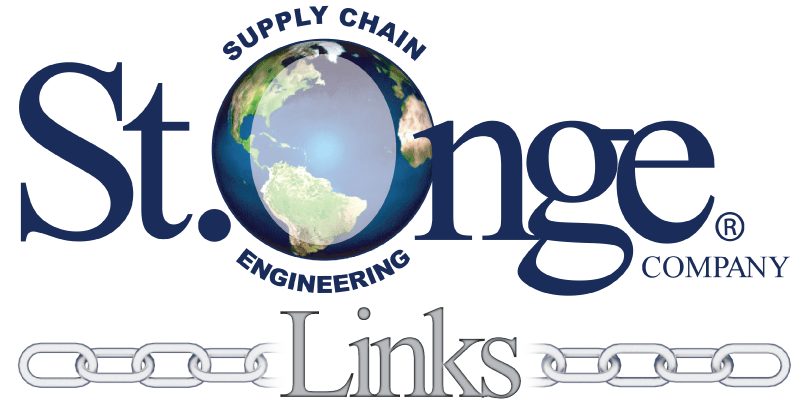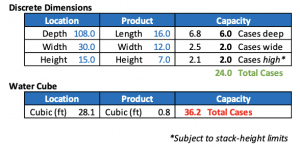 Strengthening your supply chain one link at a time.
Strengthening your supply chain one link at a time.
In a previous blog entry, I discussed receiving, which is likely the most important process within a distribution center (assuming inventory ownership and establishing inventory accuracy). The put-away process, however, probably has a broader effect than any other function within the four walls of a distribution center.
The capabilities of the WMS to determine accurately the maximum capacity of a location for an item is the critical foundation for achieving the functionality listed above. The most robust systems will use the “discrete dimensions” of products and locations (length, width, height), not “water cube” (aggregate cubic size).
In the example below of storing cases of product in a carton-flow location, evaluating each dimension will result in an accurate capacity of 24.0 cases of product. In contrast, evaluating aggregate cube will cause an overstated capacity (36.2 cases of product), which is operationally unacceptable.

The WMS should also allow the stack-height limit to be defined for both the storage device and the product. The more restrictive of these settings, storage device or product, will limit the capacity within a given item/location combination. In the example above, the carton-flow storage device would likely be configured* to only one case high. For items with crushability and/or stability concerns, we may prescribe a product stack limit to prevent (for example) stacking more than three pallets high in a bulk floor location.
This and other approaches to determine the maximum capacity for each item/location is key and core to efficiently and accurately managing the movement of inventory within a distribution center, including:
A WMS is capable of better supporting put-away in these and so many other ways. Your attention to this likely under-leveraged facet of operations will be rewarded. The overall aim of system-directed put-away is for the suggested location to be appropriate and feasible 95% or more of the time. The remaining transactions should be actionable exceptions, improving system configuration, reinforcing teammate training, and adjusting product and item attributes through review and research. By expecting and demanding more of your WMS, put-away can become a habitual process, freeing your teammates’ energy and experience toward other aspects of your business.
–Kail Plankey, St. Onge Company